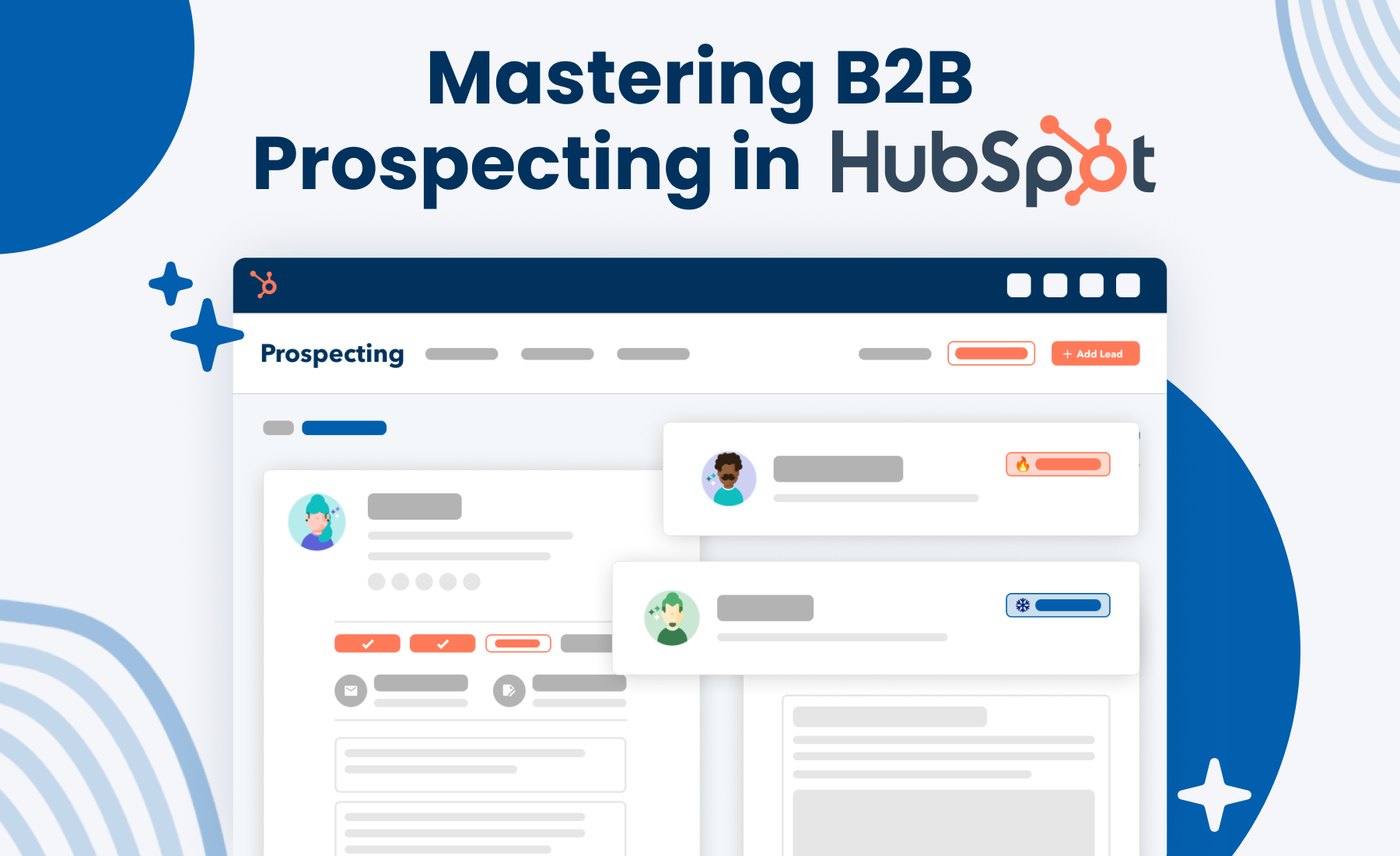Effective B2B prospecting is crucial for building relationships and driving sales. But where do you start? If you're looking to enhance your B2B outreach, this guide is for you. We'll walk you through the essential steps of setting up successful prospecting strategies, from targeting the right accounts to tracking your performance. By the end, you'll be equipped with practical insights and actionable tips to elevate your prospecting game and achieve tangible results.
Understanding the Importance of B2B Prospecting
B2B prospecting is the process of identifying organizations that align with your ideal customer profile and proactively engaging with them to initiate a conversation. B2B prospecting focuses on building long-term, mutually beneficial relationships that drive sustained growth. Because B2B buying cycles are generally longer than B2C, prospecting becomes a key strategic play to get in front of your audience and start more meaningful conversations.
With the right prospecting strategy, businesses can:
- Expand Their Network: Effective prospecting opens doors to new opportunities and partnerships.
- Increase Conversion Rates: By targeting the right prospects, you're more likely to convert leads into customers.
- Enhance Brand Visibility: Consistent prospecting boosts your brand's presence in the industry.
Let's take a look at some of the essential steps to get started.
Setting Up Target Accounts
The first step in B2B prospecting is identifying your ideal customer profile and setting up Target Accounts. Start by analyzing your existing customer base to pinpoint common characteristics among your most valuable clients. Consider factors like industry, company size, and location.
Once you've defined your ideal customer profile, compile a list of organizations that fit this description. Use tools like LinkedIn Sales Navigator or HubSpot to discover and organize these potential accounts. It's essential to prioritize these targets based on potential value and alignment with your business goals.
Identifying Contacts Within Organizations
Now that you've set up your Target Accounts, the next step is identifying key decision-makers and contacts within these organizations. The goal is to find individuals who have the authority to make purchasing decisions or influence the buying process.
Leverage platforms like LinkedIn and company websites to research and connect with relevant contacts. Look for job titles like “VP of Sales,” "Chief Operating Officer," or "Procurement Manager." Building a list of contacts is critical for creating personalized outreach strategies that resonate with potential clients.
Crafting Effective Sequences
A well-structured Sequence is essential for nurturing leads and maintaining engagement. Start by developing a series of emails, call scripts, and follow-ups tailored to each prospect's needs and pain points.

Emails That Engage
When crafting your emails, ensure they are concise—less than 200 words—and provide value. Pose a question to spark curiosity and encourage interaction. Use HubSpot’s Meeting Scheduler to include a meeting link to make it easy for prospects to schedule a call with you without all the back and forth. Remember, personalization is key; leverage Personalization Tokens to use the prospect's name and reference their company to establish rapport.
Mastering Phone Calls
Phone calls are an integral part of your prospecting sequence. They allow you to have real-time conversations and address any concerns. Prepare a script or outline to guide your conversation, but remain flexible to adapt to the prospect's responses. Focus on how your solution addresses their specific challenges and offers tangible benefits. If you want to organize these scripts in a meaningful and accessible way, store them in HubSpot’s Playbooks tool.
Determining Key Performance Indicators (KPIs)
To measure the success of your B2B prospecting efforts, it's essential to define clear KPIs. These metrics will help you track performance and identify areas for improvement. Common KPIs include:
- Meetings Booked: Track how many meetings or calls your outreach efforts generate.
- Two-Way Communication Established: Measure the number of prospects who engage in meaningful dialogues.
- Deals Created: Monitor how many leads progress from contacts in your CRM to meaningful deals on your pipeline.
By setting specific KPIs, you can gain valuable insights into your prospecting strategy's effectiveness and make data-driven decisions.

Setting Up a Dashboard to Monitor Performance
A centralized dashboard is invaluable for monitoring your prospecting performance in real time. Pull reports from HubSpot’s Report Library or develop some custom reports of your own to create a visual representation of your KPIs and metrics.
Your dashboard should include:
- Lifecycle Stages: Monitor the progress of each prospect through the various phases of the sales process.
- Activity Overview: Monitor the number of calls, emails, and meetings conducted.
- Conversion Rates: Analyze how many prospects move from one stage to the next.
Having a clear overview of your prospecting activities allows you to identify trends, optimize your approach, and celebrate wins.

B2B prospecting is a vital component of any business growth strategy, and mastering it can lead to significant success. For expert insights and valuable resources on effective B2B strategies, we invite you to explore our website or connect with our dedicated team. We're here to provide clear, data-backed solutions that drive results and help you achieve your goals.


.png)

-1-1.png)
